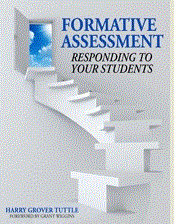Traditionally, teachers research apps for their class. They assign apps to students. The teachers assign a specific app or give students a choice of several pre-selected apps. As a Modern Language teacher, I suggested apps to my students in the early part of the year.
However, in January, I let my students select which apps they wanted to use based on their own app searching and a minimal checklist. I just gave them a topic to search as “food”. I asked them to look at two or more apps that had the same topic. My minimal checklist includes: has a comprehensive list of words, phrases, or sentences for the topic; gives the written Spanish word and its definition (or included a picture); pronounces the word; is free; and is available on both Android and Ipad. The app gets extra points if it uses the words or phrases in sentences or questions. The app also receives extra points if the app provides practice on the words.
I found that when I let my students select which apps they wanted to use based on their own app searching and a minimal checklist, they actually used the app. In fact, they often commented to other students about their great app for the topic. They willingly showed me the app. They shared stories about where they were when they were using the app (supposedly helping Mom in the grocery store!).
More importantly, they learned the critical vocabulary for the topic from the app so they were ready to use the vocabulary in their communicating about the topic.
Who selects apps for your students?
My ebook, 90 Mobile Learning Modern Language Activities, is available at http://bit.ly/90mlact.
My three formative assessment books, Improving Foreign Language Speaking Through Formative Assessment, Formative Assessment: Responding to Your Students and Successful Student Writing Through Formative Assessment, are available at http://is.gd/tbook
My modern language blogs are now at http://bit.ly/imprml. I have developed 27 Spanish activities and 5 Modern Language Visual activities in which students express themselves in the modern language and move toward spontaneous speaking Teacherspayteachers: http://bit.ly/tpthtuttle


